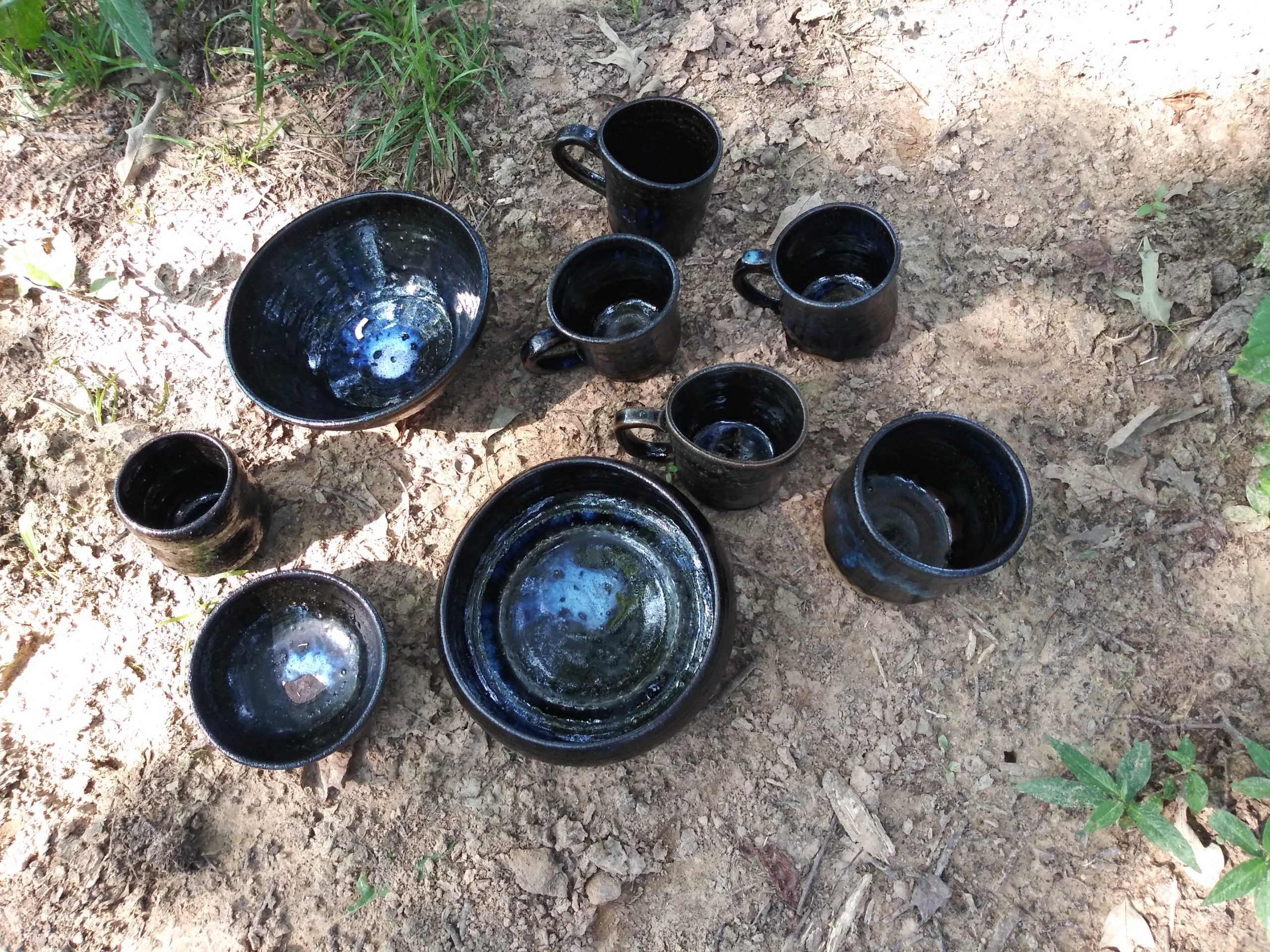
Pottery uses only ingredients that are normally found in nature. If you compare the chemistry of a normal clay body to various rocks, you will find they are remarkably similar. Glazes as well, only contain ingredients that are normally found in nature.
It’s possible a huge pile of pottery could be a leach concern IF an acid was present in high enough concentrations to leach things out of the glaze ie acid rain, the glaze was also unstable, AND also contained harmful ingredients. All 3 of these would have to align. Very few glazes this days contain ingredients that would be harmful in this scenario. Lead being the primary concern. You would be hard pressed to leach enough cobalt to cause any problems as cobalt is naturally found in soils and also an essential plant nutrient. As with all potentially harmful things, dosage is important.
To address sharpness…flint, chert, quartzite, and obsidian are all naturally occurring rocks that like to break with very sharp edges similar to what you would find in a pottery shard. I’m sure there are others these are just the ones I know can be used to make arrowheads. Sharpness is something that naturally occurs in nature.
Throwing away pottery is essentially throwing away a rock. I will take hit millennia to decompose, but it’s really not hurting anything in the meanwhile.
The real environmental concern with pottery is the amount of energy used to mine, transport, and fire the ingredients. I seriously doubt it comes anywhere close
to the impact of plastics. Especially since a well made piece of pottery will last a lifetime.
Happy Potting!


